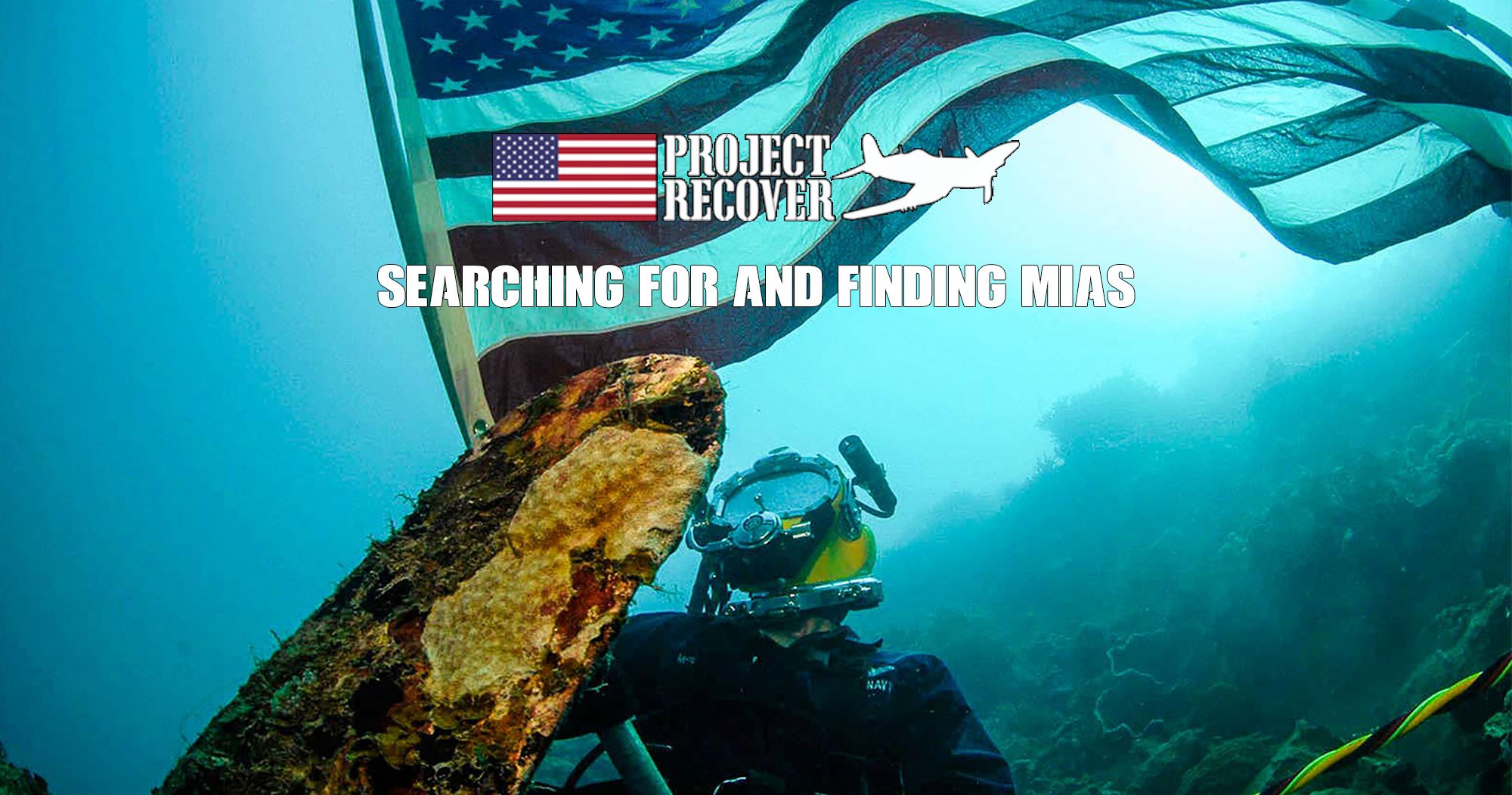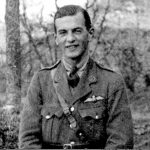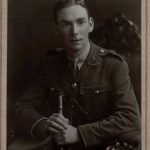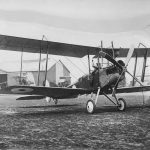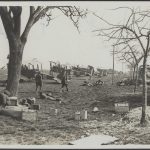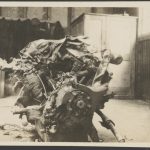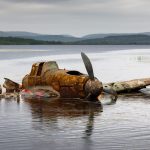As millions of Americans sit down in celebration today for Thanksgiving dinner with family and friends, perhaps we should pause for a moment to remember those empty chairs around the table, the ones reserved for missing loved ones. Almost all of us have lost someone dear to our hearts, but most at least have had the closure of knowing how they came to pass, and the location of their final resting place. Imagine how it is for those whose loved ones simply disappeared in wartime, whose final fate, while presumed, is still uncertain. The echos of great loss remain, even during life’s happier moments, the shadows caste by that incomplete final goodbye are still present. This can even prove true for those of us whose antecedents disappeared generations before they themselves were born. Your editor himself can attest to this phenomenon. My great uncle, 2ndLt. Thomas Hubert Buswell, vanished over enemy lines while flying on a mission with Britain’s Royal Flying Corps during WWI. He has no known grave, and the same is sadly true for his observer, Lt. Charles Etherington Wharram. I still think of them often, even though they died five decades before I was born. My great grandmother, whom I did know, spent years trying to find out what happened to them, but to know avail, and it still feels like unfinished business even to me 100 years after their 52 Squadron R.E.8 went down on March 26th, 1918.
This is why I find it so important to support organizations which devote themselves to finding the remains of our loved ones who fell in battle but have no known grave. And for that reason, I do hope that some of you will read the following press from Project Recover, and perhaps see your way to supporting their efforts…
Project Recover Consolidates Under One Operation and Secures Federal 501(c)(3) Status
MIA-Related partnership between The BentProp Project, and teams from Scripps Institution of Oceanography at the University of California San Diego and University of Delaware’s College of Earth, Ocean, and Environment formalized under Project Recover® brand
Project Recover—a collaborative team of marine scientists, archaeologists and volunteers who have combined efforts to locate aircraft associated with MIAs from WWII— today announced the organization’s consolidation of its public and private partners, including The BentProp Project, under one operation. The move was done to more clearly reflect the mission of Project Recover and strengthen the brand as it continues to advance its search capabilities and attract new partners to support its efforts.
Established in 2012 with initial support from the Office of Naval Research and formalized in 2016 with private funding, Project Recover was co-founded by researchers at the University of Delaware’s College of Earth, Ocean, and Environment; Scripps Institution of Oceanography at the University of California San Diego, and The BentProp Project, Limited. The BentProp Project began in 1993 and formalized its mission structure in 2000, as a team of volunteers, trained specialists, and professionals, each with essential expertise in history, aviation, diving, and navigation, who are dedicated to locating and assisting with repatriating American POWs and MIAs from World War II and other conflicts around the world.
As part of the consolidation, the digital and social media presence of The BentProp Project has transitioned under Project Recover’s digital and social media channels to bring together both passionate and engaged audiences and strengthen the support and interest already received from those who support and follow the organization’s search operations and repatriation efforts.
“The spirit of the mission, vision and values that The BentProp Project was founded on will not change,” said Drs. Pat Scannon, Mark Moline and Eric Terrill, co-founders of Project Recover. “They will be pulled through in everything that Project Recover strives to accomplish through the tireless dedication of its professionals, specialists and volunteers, with the end goal of providing information and closure to the families of the more than 70,000 U.S. service members still missing in action from World War II.”
Project Recover’s cutting edge team of scientists, historians, archaeologists, and engineers conduct research and surveys to discover new crash sites, fully document wreckage, and correlate wrecks to known MIA cases. That documentation can then be used by the U.S. Department of Defense’s Defense POW/MIA Accounting Agency (DPAA) to evaluate that site for the possible recovery of remains. DPAA is tasked with recovery and repatriation efforts, including notification of the families of these MIAs. To date, the Defense POW/MIA Accounting Agency (DPAA) and its predecessors have conducted four recovery missions based on data supplied by Project Recover.
Since 2013, Project Recover has conducted 28 missions in 13 countries, identifying and documenting 30 U.S. and foreign aircraft that have been linked to at least 81 MIAs. The missions and operations which Project Recover embark upon are made possible by the support of government agencies, corporate and private donors, including a substantial financial commitment from Dan Friedkin, CEO and Chairman of The Friedkin Group. Friedkin’s continued support helps sustain ongoing missions, while enabling the organization to innovate its technology and broaden its search and discovery efforts to focus areas around the world.
Through Project Recover’s collaborative efforts with DPAA, five U.S. Airmen have been accounted for and repatriated to their families in the U.S. Within the past year there have been three repatriation ceremonies for American WWII service members who were recovered and identified as a result of Project Recover’s search and discovery efforts: Albert (“Bud”) Rybarczyk, Navy Reserve Aviation Radioman 2/c and Ora H. Sharninghouse Jr., Navy Reserve Aviation Ordnanceman 2/c of the U.S. Navy, USS Intrepid, Air Group 18 whose TBM Avenger went down in the Republic of Palau, and Navy Reserve Lt. William Q. Punnell whose F6F Hellcat was shot down in the Republic of Palau.
###
About Project Recover
Project Recover enlists 21st century science and technology combined with in-depth archival and historical research in a quest to locate and repatriate the more than 70,000 U.S. service members still missing in action since World War II. Established in 2012 with initial support from the Office of Naval Research, formalized in 2016 with private funding and established as a 501(c)(3) in 2018, Project Recover is made up of a collaborative team of marine scientists, archaeologists and volunteers who conduct search and discovery missions around the world.
Project Recover has a prioritized global database of 400+ U.S. aircraft involving more than 2,100 MIAs and continues to expand their search worldwide to locate those fallen heroes who remain missing in action. Learn more about Project Recover’s expanding footprint, with cases developing for global search and discover, and support its efforts by visiting ProjectRecover.org, or its Facebook, Instagram and YouTube channels.







